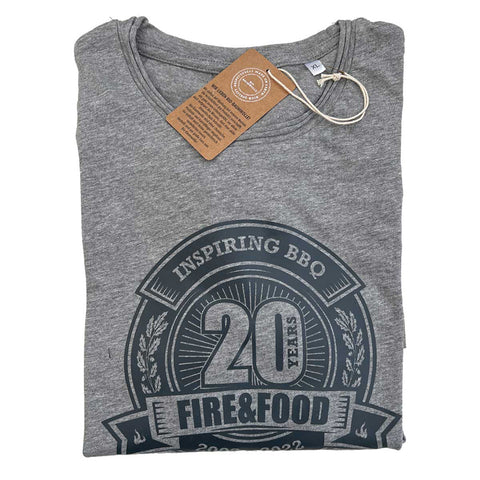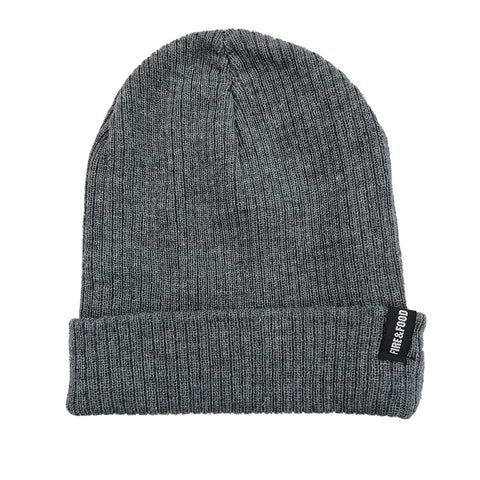Safe gas grill restart in spring: These five points should be considered by grill fans
Have you checked the gas hose and pressure regulator?
Before the gas grill reaches new peak performance after the winter, grill enthusiasts should carefully check its current condition. "The first step is a visual inspection of the gas hose and pressure regulator," says Markus Lau. "This check should be especially thorough if the grill has been left outdoors unprotected during the winter." Immediately replace any gas hose with fine hairline cracks or porous areas. The pressure reducer must also be undamaged. Furthermore, all connection valves must be free of particles or foreign matter.
Still within the ten-year period?
If no external signs of wear are visible, the gas hose and pressure regulator require another check: Are both still within their ten-year service life? According to recognized engineering practices, the gas hose and pressure regulator must be replaced after ten years at the latest. Many gas hoses have a yellow tag attached to them for this purpose. This tag indicates the replacement year for different applications—for example, for use with a gas grill. If there is no yellow tag, the year of manufacture on the hose line can help. "Gas hoses manufactured in 2015 must be replaced by the end of the year—and older hoses immediately," says Markus Lau.
Connected correctly?
The gas grill and cylinder require an optimal connection to function flawlessly. The correct sequence: First, set up the grill so that it is ready for use. To do this, attach the hose to the grill using the fixed connection and tighten the pressure regulator on the hose. This often requires a wrench. Since these connections usually remain in place, they are only checked for leaks later. The next step is the connection to the gas cylinder: If the cylinder has a valve protector, usually a red protective cap, first remove this from the cylinder valve. After a quick check that the cylinder is closed – the valve cannot be turned clockwise – the black locking nut is unscrewed from the cylinder thread. The connection between the gas cylinder and the gas grill is established via the hose and the pressure regulator. Before connecting the pressure regulator to the cylinder, be sure to check: Is the cylinder valve sealing ring still present? "The union nut can be tightened by hand or with a special assembly aid," says Markus Lau. "Using pliers can damage the seal." Important: Grill fans should also check the connections if the gas grill and cylinder were permanently connected during the winter.
Still completely tight?
Another essential step before starting a BBQ is checking the connections for leaks. This can be done using a leak detection spray, for example. "Simply spray the various connection points and then open the gas cylinder valve," advises Markus Lau. "Bubbles and hissing are indications of leaky connections." In this case, close the gas cylinder valve immediately, loosen the pressure regulator again, and then reconnect it to the gas cylinder.
Clean thing?
Now all that's left is a thorough cleaning of the gas grill. This is especially important if it was neglected at the start of winter. Burning it out is the best strategy for getting rid of excess grease and grill residue. To do this, close the lid and set the temperature to the highest setting. Once the smoke has cleared, turn off the grill and let it cool down. The soot and ash residue on the grate and burner cover can then be removed dry with a suitable grill brush. The grease tray usually requires a more robust approach: Depending on the degree of dirt, deposits can be removed with a plastic spatula or a grease-dissolving cleaner. Next, clean the exterior parts of the grill. "Water and dish soap are ideal for cleaning the outside of the grill. Avoid aggressive cleaners or scouring agents, as they can attack the surfaces," says Markus Lau. After cleaning, dry everything thoroughly to prevent rust.
Energy source liquefied gas:
Liquefied petroleum gas (LPG) – not to be confused with liquefied natural gas (LNG, methane) – consists of propane, butane, and their mixtures and liquefies under low pressure. This energy source burns with reduced CO2 emissions and low emissions. Renewable variants are available as biogenic liquefied petroleum gas and, in the future, as dimethyl ether (rDME). LPG is used for heating and cooling purposes, as a fuel (autogas), in industry and agriculture, and in the recreational sector.





















